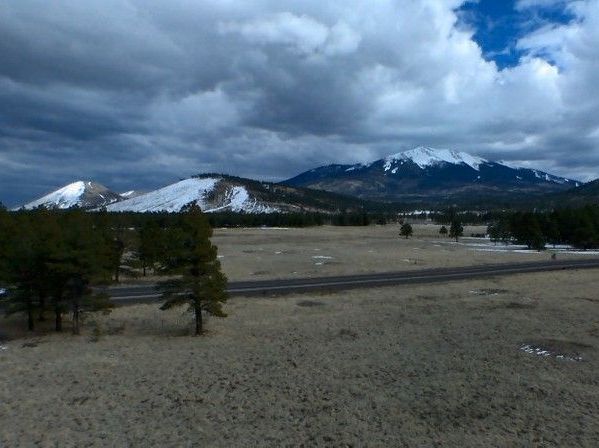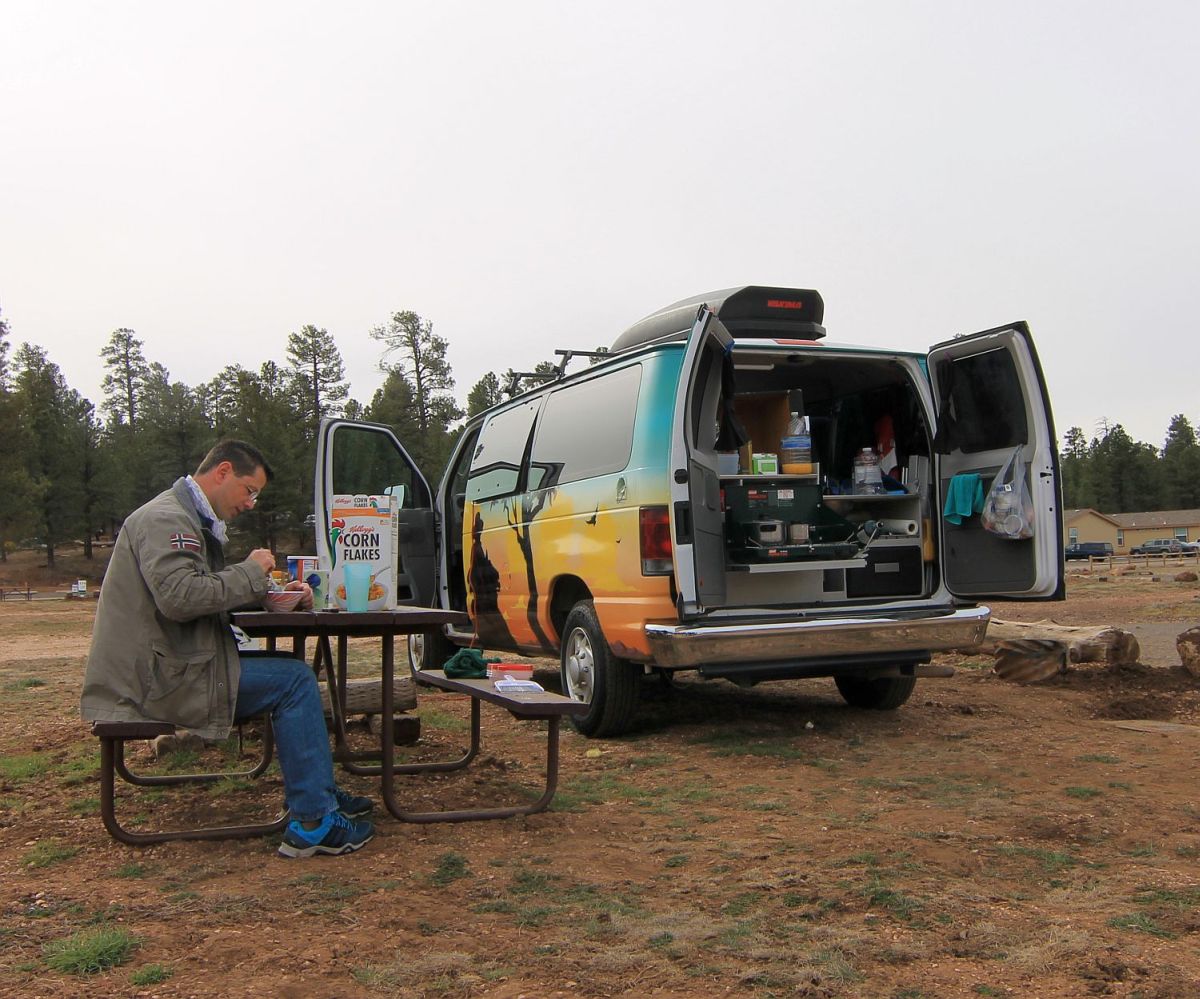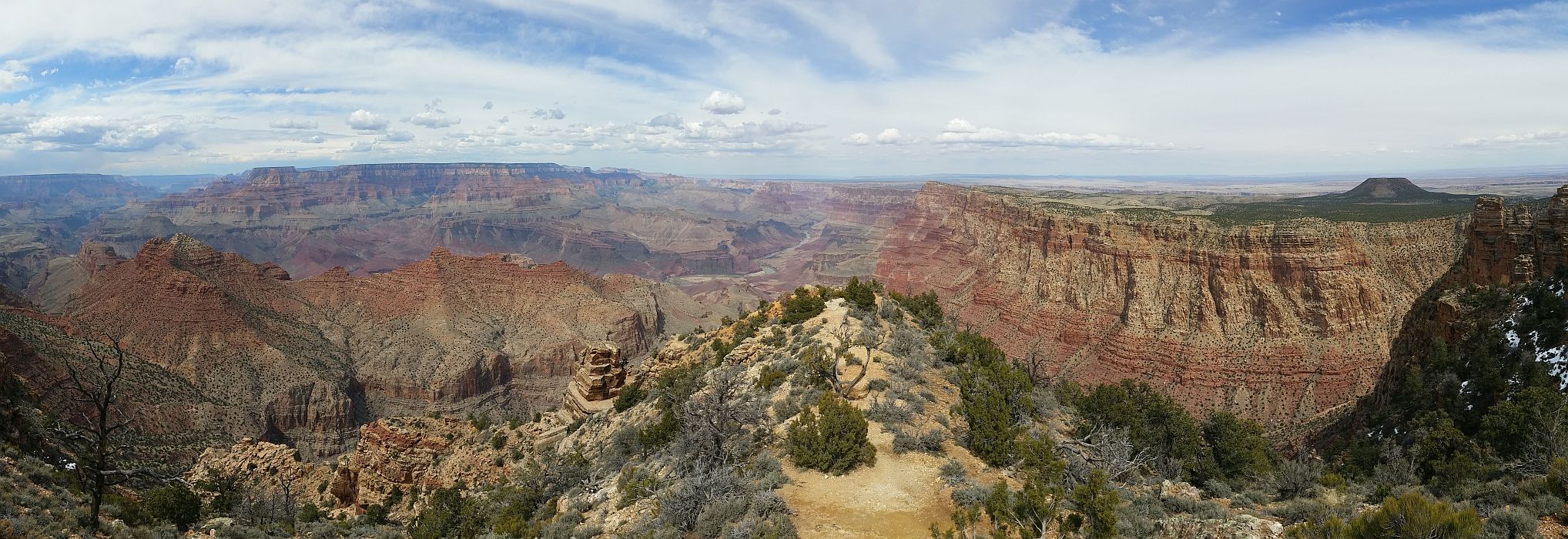San Francisco Peaks (Image: Julian)

On the camping ground in Tusayan

San Francisco Peaks (Image: Julian)
|
On the camping ground in Tusayan
|

Two tourists from Munich
|
Next forenoon: Ravens at Lipan's Point
|
|
|
|

Deep down is the Colorado river (Image: Julian)
|
The side canyon of the Little Colorado
|
Crossing barren lands ...
|
... and conspicuous rock fortresses ...
|

Under the night sky
|
View to Southwest
|
|---|---|
Sunrise
|
In the morning light
|
View from the valley bottom
|

Soon we come into some heavy rain
|
We continued to the Northeast for nearly another 50 miles, until shortly before Bluff, and then turned South, a long and remote 150 miles drive along Route 191. Shortly before we reached the highway from Albuquerque to Flagstaff, we came into some heavy rain - that's also necessary here from time to time. |

The craters rim is clearly standing out
|
On the camping ground in Flagstaff
|